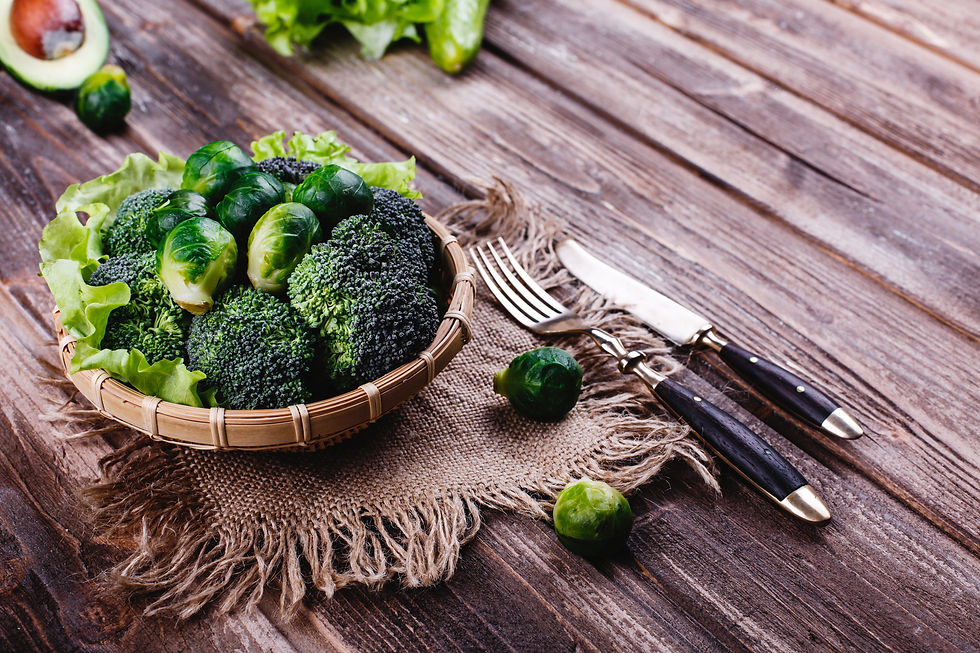Winter Cherry for Your Joints
- Marketing cheryl
- Feb 2, 2023
- 4 min read
This article is the 3rd installment of our 4-week series on natural ingredients that benefit our joints. Read on to learn about today’s natural ingredient - Winter Cherry, as we explore how this gift from nature helps us with our joint health.
Nature is boundless - we derive many of our daily necessities from nature, such as food, water and materials. Many available natural herbs and plants can be used for their medicinal benefits as well, with one such plant being Winter Cherry.

Winter Cherry, also known as Indian Ginseng or Ashwagandha, is a medicinal plant that has a long history of usage in Ayurveda, a system of natural healthcare that originated from India.¹ Winter Cherry is used to treat a wide variety of illnesses, such as asthma and diabetes.² However, our focus today is on the usage of Winter Cherry in managing joint pain due to its analgesic and anti-inflammatory properties.
Winter Cherry contains many natural compounds, but its major active compound is called Withaferin A. Most of the beneficial medicinal properties that Winter Cherry possesses are due to Withaferin A.
Analgesic Properties of Winter Cherry
Withaferin A can help to reduce pain experienced in the human body, but we should understand why pain is felt in the first place.
When we suffer from injuries, specialized nerves in our body can detect the damage sustained and send signals to our brain. Once these signals are received by our brain, it triggers us to feel pain.

Our body also experiences inflammation as part of our immune system’s response to injury. This inflammation activates a substance called “pro-inflammatory cytokine” which then induces the activity of an enzyme called Cyclooxygenase-2 (COX-2).³
The role of COX-2 enzymes in our body is to produce “prostaglandins”, a hormone-like substance that can promote pain and inflammation in the body. Therefore, to reduce the pain felt, we can either try to reduce the production of prostaglandins or to stop the pro-inflammatory cytokines, both of which can be done by Withaferin A in Winter Cherry.
Withaferin A has been shown to suppress the production of pro-inflammatory cytokines in our body.⁴ This then suppresses the activation of COX-2, consequently reducing the production of prostaglandins and reducing the pain felt. Winter Cherry also soothes the nervous system from pain response⁵ thus, relieving us of pain.
Anti-inflammatory properties of Winter Cherry
Withaferin A can suppress the production of pro-inflammatory cytokines.⁴ Thus, it can reduce COX-2 activation, thereby reducing the production of prostaglandins which can promote inflammation.
Besides COX-2 and prostaglandins, oxidative stress can also lead to inflammation. Oxidative stress refers to an imbalance between antioxidants and Reactive Oxygen Species(ROS) in the body. When there are too many ROS and too little antioxidants, ROS can cause cell and tissue damage. This oxidative stress can thus lead to inflammation as a response to the damage.⁶
What Winter Cherry does is to improve the body’s antioxidant status as it contains natural compounds with antioxidant activity⁷. The increase in antioxidants can then reduce oxidative stress, thereby helping to reduce inflammation.

Winter Cherry is amazing not just for the analgesic and anti-inflammatory properties it possesses, but also for its ability to work well with other medicinal plants to further enhance their health benefits. When combined with other ingredients like Indian Frankincense and Turmeric, these natural ingredients are able to confer great beneficial effects to joint health.
Stay tuned for the next article of this 4 weeks series where we will focus on the last natural plant based ingredient that can help our joints.
Hint: The next ingredient is commonly used in Asian cuisines and gives off a classic spicy sting. You have probably tried it before!
References
Sciencedirect.com. (2019). Ayurveda - an overview | ScienceDirect Topics. [online] Available at: https://www.sciencedirect.com/topics/medicine-and-dentistry/ayurveda.
www.sciencedirect.com. (n.d.). Withania somnifera - an overview | ScienceDirect Topics. [online] Available at: https://www.sciencedirect.com/topics/biochemistry-genetics-and-molecular-biology/withania-somnifera [Accessed 30 Jun. 2022].
Mastbergen, S.C. (2002). Selective COX-2 inhibition prevents proinflammatory cytokine-induced cartilage damage. Rheumatology, 41(7), pp.801–808.
Singh, D., Aggarwal, A., Maurya, R. and Naik, S. (2007). Withania somnifera inhibits NF-κB and AP-1 transcription factors in human peripheral blood and synovial fluid mononuclear cells. Phytotherapy Research, 21(10), pp.905–913.
Kulkarni, R.R., Patki, P.S., Jog, V.P., Gandage, S.G. and Patwardhan, B. (1991). Treatment of osteoarthritis with a herbomineral formulation: a double-blind, placebo-controlled, cross-over study. Journal of Ethnopharmacology, [online] 33(1-2), pp.91–95.
Ramos-González, E.J., Bitzer-Quintero, O.K., Ortiz, G., Hernández-Cruz, J.J. and Ramírez-Jirano, L.J. (2021). Relationship between inflammation and oxidative stress and its effect on multiple sclerosis. Neurología.
Bhattacharya, S.K., Satyan, K.S. and Ghosal, S. (1997). Antioxidant activity of glycowithanolides from Withania somnifera. Indian Journal of Experimental Biology, [online] 35(3), pp.236–239. Available at: https://pubmed.ncbi.nlm.nih.gov/9332168/ [Accessed 30 Jun. 2022].
Disclaimer: This article is intended for informational or educational purposes only, and does not substitute professional medical advice or consultations with healthcare professionals. The disclaimer also provides that no warranties are given in relation to the medical information supplied in the article, and that no liability will accrue to Miraco Nutripharm Pte Ltd or any affiliated authors in the event that a user suffers any loss as a result of reliance upon the information.



Comments